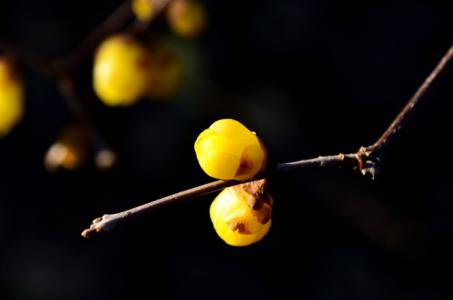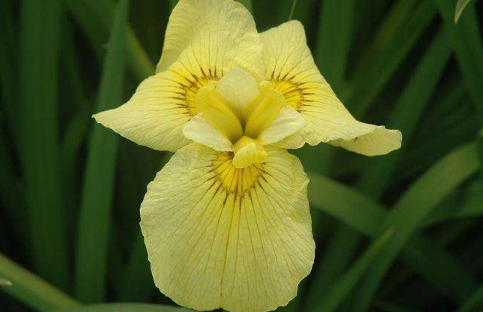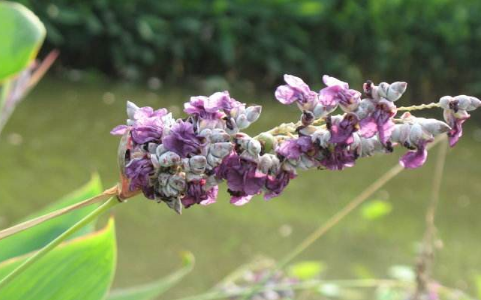Culture method of preserved plum bonsai
1. Lighting
Lamei likes the sun, so it is necessary to put the bonsai in a place with light, but be careful not to expose it in summer.
2. Watering
Lamei is not resistant to water and moisture, so watering should be careful not to have stagnant water, so that the bonsai of Lamei can grow healthily, otherwise it may wither.
3. Soil
According to the growth habits of Lamei, the choice of soil for Lamei bonsai must be nutrient soil with loose soil and good drainage, which can promote the growth of Lamei bonsai.
4. Pruning
For Lamei, regular pruning can not only maintain the beautiful plant shape, but also promote the growth of the number of flowers, so it is necessary to prune the potted plum landscape frequently.
5. Disease and pest control
Wax plum bonsai often occurs some pests and viruses. If pests are found, insecticides should be sprayed immediately. If virus infection is found, diseased branches should be cut off immediately, which is not only fast but also very effective.

These are the ways of raising preserved plum bonsai. Have you learned it? Next, the editor will share with you the words of the wax plum blossom.
Maintenance methods of Lamei bonsai
We all know that Lamei is a flower in full bloom in winter, and the proud plum in the snow symbolizes the integrity of plum blossoms. Many people like plum blossoms because of their perseverance. The fragrance of plum blossom is strong, and the posture of the flower branch is very beautiful, which has a high ornamental value. Preserved plum bonsai is a method of planting dried plum at home. Here are some conservation methods of preserved plum bonsai.
Maintenance methods of Lamei bonsai
1. The maintenance method of preserved plum bonsai-watering
Preserved plum has always been a cold blooming flower, so it can grow in a relatively harsh environment, even in a dry and cold environment, so it is actually very drought-resistant, which determines that it should not deliberately water too much. When potted Chinese plum is cultivated, too much watering will lead to rotting roots.
2. The maintenance method of preserved plum bonsai-- fertilization.
Plants have enough nutrients to grow healthily. Although Lamei has strong vitality, it also needs proper fertilization if it is cultivated in pots. The conservation of Lamei bonsai should also pay attention to the basic fertilization techniques. Lamei itself also likes fertile soil. When cultivating Lamei bonsai, do not apply too much fertilizer, but apply thin fertilizer regularly.
Third, the maintenance method of preserved plum bonsai-pruning
Lamei is a tree plant, and the branches will stretch out in the process of breeding, so basic pruning is needed. If the dried plum is not pruned, it will grow too luxuriantly and will not look good.
The maintenance method of preserved plum bonsai plastic art, many flower friends asked, how should be properly maintained? The following Zuihua net is introduced in detail: place: wintersweet bonsai should be placed in a place to avoid the wind and the sun, avoid cold wind, shade slightly in summer, and pot plants in winter should be moved to indoor overwintering when the temperature is less than 1 ℃. Watering: wax plum is more drought-tolerant, it is known as "immortal wax plum", but it can not be too dry. Usually the basin soil can be slightly drier, watering should be "dry and wet", if it is not watered, it will be watered thoroughly. Summer is the flower bud formation period, can not be short of water, should be watered in the morning and evening, after autumn leaves, the basin soil can be dry, watering every 5-7 days. Fertilization: wax plum is very fertile, so it is appropriate to apply cake fertilizer and water every 10 days in the early stage of flower bud formation from April to June. From the end of June to before ambush, the thin fertilizer and water with the combination of nitrogen and phosphorus was applied once a week to promote the formation of flower buds. The fertilizer should be thin when topdressing for 1 or 2 times in summer. Apply it again after autumn. When changing the basin, you can apply sufficient basic fertilizer such as bone meal and bean cake at the bottom of the basin. Pruning: pruning and sprouting are very important to make Wintersweet blossom year after year. Pruning usually takes place from March to June and stops after August. The old flower branches should be truncated immediately after flowering each year, leaving a maximum length of only 15cm to 20cm. After the new branch grows 2-3 pairs of buds, the terminal bud is removed, and soon the side branch grows again. After growing to 10 cm, the bud is picked again and repeatedly several times until the flower bud is basically formed. It is also necessary to prune all kinds of cross branches, parallel branches, overlapping branches, opposite branches, long branches, and overdense and thin branches that affect the appearance of the tree. It is said that there is no shortage of branches in the flower proverb, so the wax plum can be re-cut. Turn the basin: the bonsai of Chimonanthus should be turned every 1-2 years, and it is better to turn the pot at the end of winter and the beginning of spring. The germinated buds can be removed before turning the basin, and then transplanted when the hidden buds sprout and expand after about 5 days. When turning the basin, remove the old soil of 1B3, cut off the rotten and withered roots, and trim the overgrown old roots. Instead of frozen crisp pond soil or humus-rich rotten leaf soil, mixed with appropriate amount of rice chaff ash and sandy soil. Pest control: wax plum has strong resistance to diseases and insect pests, and occasionally has pests such as diamondback moth, big coir moth, aphids, shell insects, etc., which can be sprayed with 1500 times of dichlorvos or 1500 times of crystal trichlorfon. Through the introduction of preserved plum bonsai in this article, I hope you can gain something! Thank you for your attention!
- Prev

Culture methods of Acorus calamus
1. Acorus calamus likes loose and breathable sandy soil, which can be mixed with vermiculite, river sand and nutritious soil, and the loam rich in humus is the best. two。 Water calamus likes a humid environment, daily watering to keep the soil moist, but also to keep the environment moist, can spray water to the leaves and around to prevent drought
- Next

Propagation method of Rhizoma Rehmanniae
The most common method of propagation is to propagate in separate plants. First of all, dig out the plant, break its root, you can choose a more robust plant for planting. Zailihua can also cut one or two rhizomes from the rhizome of the mother plant, and plant the rhizome to grow a new plant. Sowing method can also be sowed and propagated.
Related
- Fuxing push coffee new agricultural production and marketing class: lack of small-scale processing plants
- Jujube rice field leisure farm deep ploughing Yilan for five years to create a space for organic food and play
- Nongyu Farm-A trial of organic papaya for brave women with advanced technology
- Four points for attention in the prevention and control of diseases and insect pests of edible fungi
- How to add nutrient solution to Edible Fungi
- Is there any good way to control edible fungus mites?
- Open Inoculation Technology of Edible Fungi
- Is there any clever way to use fertilizer for edible fungus in winter?
- What agents are used to kill the pathogens of edible fungi in the mushroom shed?
- Rapid drying of Edible Fungi

